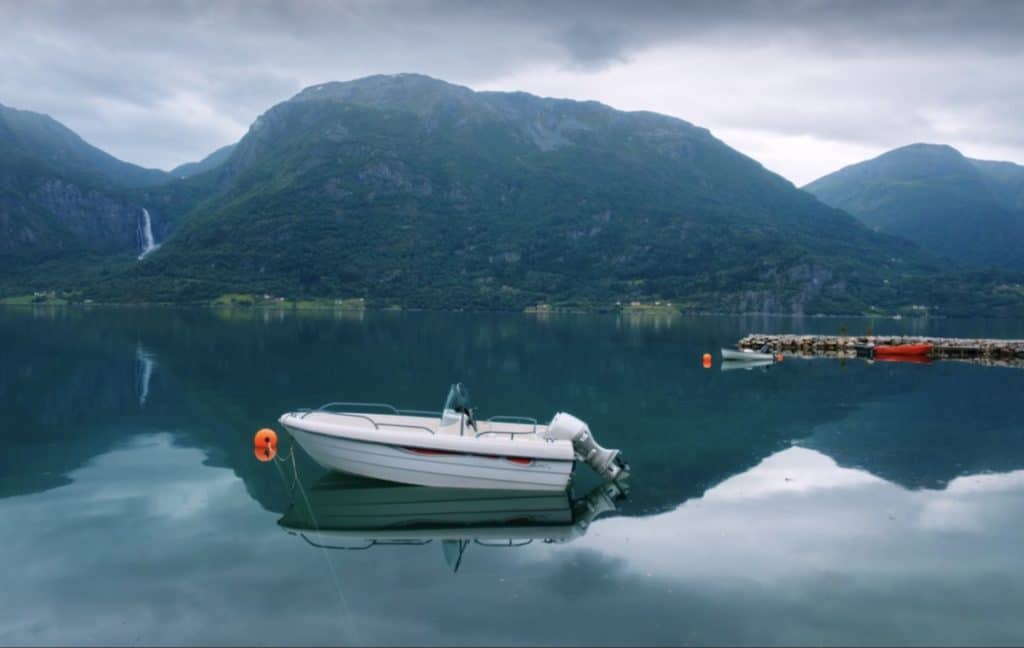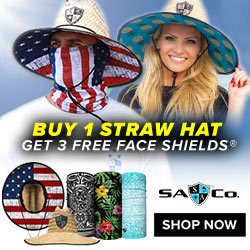Inshore Fishing Explained
In this article, I am going in a completely different direction. (I may be all turned around. That’s not uncommon for me.) We normally have articles that cover many different freshwater topics. Today, we are going to dive into saltwater fishing. We will tell you what it is, what the best equipment is, optimal bait, and give you some tips for beginners. So brace yourself, everyone, we are going on a totally new adventure today.
Inshore fishing refers to fishing near land. You will be fishing in water from 2 feet to 20 feet deep and you will have no choice but to be on a boat, in a canoe, or a kayak to reach these areas. Bays, estuaries, shorelines, and saltwater rivers that are normally within a mile from shore. Producing the biggest fish you will probably ever see.

Since the waters are calmer you can use a small basic boat to inshore fish. Inshore fishing also requires less as far as your equipment goes; poles, holders, storage, and attire. Small nets and light rods can easily be used. You need to realize with less intense waters, gear, and the boat you are not going to catch big “trophy-sized” fish.
Once you hit 30+ meters, you are in the offshore fishing territory, where your fishing gear will not do you much good. Inshore and offshore fishing are very different and require completely different equipment.
Inshore Saltwater Fishing Gear
To successfully start fishing in the back-country you do not need a lot of gear. But, you will need some specifics for inshore saltwater fishing. These recommendations are for beginners, but experienced fishermen can also benefit from and use the same equipment.
This gear is used to target redfish, flounder, spotted seatrout, and pompano just to name a few. Depending on the state you choose to fish and the area, there are going to be other fish that you are going to be able to hunt for.
Fishing Rod: the most versatile inshore saltwater fishing rod is going to be a medium weight rod which is between 6.5 and 7 feet long. It should have an even balance between strength and sensitivity.
You want a rod that is strong enough to pull a redfish away from the rocks, but it also has to be light enough to feel the lighter bites. The rod length is going to allow you to cast and land your bait right in the middle of the “strike zone”. This is where the target fish are going to be hanging out, munching on baitfish.
Fishing Reel: make sure when purchasing all of your saltwater gear, that it is 100% corrosion resistant. The saltwater will corrode your rods and reels fairly quickly. You also want your reel to be durable. A 2500 to 3500 series is going to be the prime choice. If you are going to be using a 10-15 lb. braided line, then you want to find a reel that has the proper line capacity (150-200 yards).
Fishing Line and Leader: inshore saltwater fishing sets will generally include a 10-15 pound braided fishing line and two feet of 20-25 pound fluorocarbon leader material. Use heavier lines when fishing around rocks, dock pilings, or oyster bars as well as when hunting toothy species (bluefin or mackerel).
Difference between inshore saltwater fishing & freshwater fishing
Circle Hooks and Corks: to finish off your rod and reel, don’t forget the 2/0 and 3/0 circle hooks. Anglers recommend if you are fishing for redfish, to rig a shrimp 18-36 inches below a popping cork.
This is said to be extremely effective. Circle hooks are easier to remove from the fish. The corks are a preference, try them and see if you like them. They are not mandatory or essential.
Freshwater fishing is done on lakes, streams, rivers, banks, dams, and ponds. The salinity level in freshwater is less than 1.05%. With freshwater fishing it is easier to learn, there are multiple techniques/types of fishing, and a large variety of fish that you can choose from.
You can fish from shore, a boat, the docks, or bridges. Here are the top 5 things you need to know to begin freshwater fishing.
- Learn the depth. Various species of fish will prefer different depths/temperatures of water. To learn what the depth is of the fish you are targeting.
- Pay attention to time and weather. Rain, sun, sunrise, sunset, cloudy, windy, or calm; all of this determines what fish are going to be out feeding. If you know the optimum time and weather conditions for the fish you are going after, you may have an easier time catching them.
- Bait. Depending on what fish you are in search of, will determine which bait is going to produce the most results. Some fish love live bait (worms, crickets, etc….) and some fish prefer the artificial lures (rare, but does happen).
- Make sure your fishing gear and tackle also match or work the best for the species you are trying to catch. Freshwater is fairly simple unless you are a guide on a boat.
- Make sure to keep your hands washed. Fish are very very sensitive to smell.
Some of the fish that you can catch when you are freshwater fishing is; bass, trout, crappie, catfish, and salmon just to name a few. There is also the panfish, such as the bluegill, the rock bass, the white perch, and others.
Inshore saltwater fishing involves fishing in the ocean and fishing for species that are much larger than you find in freshwater; eel, Spanish mackerel, cod, redfish, snook, and tuna. Inshore saltwater fishing is done from the edges of beaches, fishing piers, and other places that are easily reached by boat or canoe.
Your tackle/equipment needs to be more sturdy than what you need for freshwater fishing because the fish you are going to be catching is so much bigger than what you catch in the local lake.
The air and saltwater are a lot harsher on your equipment. So you need gear to specifically be made for saltwater fishing. You also need to make sure after every trip you are cleaning your gear/wiping it down, per the recommendations that came with the equipment.
As long as you know when the tide is coming and going and where the certain fish are at certain times of the year, then you are ahead of the game on inshore fishing. Air and water temperature are also factors for both freshwater and saltwater fishing.
Saltwater Fishing Tackle
The best places to go for inshore saltwater fishing are Texas, Florida, Louisiana, and South Carolina. You will have a better chance at success if you have the proper tackle in your boat. If your tackle is too heavy you will not be able to cast far enough out to hit the strike zone. If your tackle is too light then you have a huge chance of losing any fish that grabs your bait.
Light inshore tackle:
This is best used for trout, flounder, Spanish mackerel, smaller redfish, and pompano. The rods are generally 6.5-7 feet long and use a 6-12 pound test line. Perfect for long whip casts using small lures and bait.
You will need a good spinning reel that will hold 140-200 yards of line and built with corrosion-resistant components. The most popular gear ratio is 6:1. This allows for quick retrieval in shallow water.
Most anglers opt to use a 10-15 pound test line (braided) and 20 feet of fluorocarbon or monofilament leader that is 6-10 pounds.
**inshore saltwater fishing requires long casts which have to be precise if you want to catch your target.**
Heavy Inshore Tackle
This is, of course, suited for the larger saltwater fish. Tarpan, tripletail, shark, large redfish, and cobia just to name a few. Rods for catching these larger fish are normally 7-7.5 feet long, medium to medium-heavy power, and line size 12-20 pounds.
Lures will most likely range from ½ to 1 ½ ounce. Therefore you will need a rod that can handle the lure weight and still be able to perform correctly. Have the precise casting ability, and the rod strength to reel in anything that bites.
The reel also needs to be bigger than the one for the light reel, but it still needs to be made with the same corrosion-resistant material. The line capacity should be 200-300 yards. Anglers strongly recommend a 15-20 pound braided line, 20 feet of fluorocarbon for a leader, and 20-25 pounds line size.
**of course the rod power needs to be heavier for the monstrous fish you may catch next.**
Inshore Techniques
A lot of anglers prefer to use soft plastics, small jig heads, or topwater plugs to fish inshore. We are going to give you the 3 most popular for inshore saltwater fishing.
Inshore topwater plugs are suggested and best used in conjunction with:
- Rod: spinning, 7-7.5 feet
- Reel: spinning, 3000-4000 or 300-400 in size
- 15 to 20-pound braided line and 20-30 pound lead
**fish in the ultra-clear water, this way you can see when they are coming in for the attack on baitfish, but you have to be quick and precise.**
Inshore Light Jig-Heads
For this type of artificial bait, this is the best rod/reel for the job;
- Rod: Spinning 6-6.5 feet with a medium-heavy action
- Reel: spinning 3000-4000 or 30-40 size
- Line: braided, 8-10 pounds with 20-pound test leader
- Lure: light jig-head ⅛ to ¼ ounces in red
**Great way to get the kids started and to build memories with them. The jig-heads will catch fish even while they are lying on the bottom.**
Inshore Live Bait
There are always anglers out there that have their own opinion about using live bait. Especially in an Inshore situation. Here is what you need to use with your live bait:
- Rod: spinning 7 foot long with medium to heavy action
- Reel: spinning 3000-4000 or 30-40 size
- Line: 15-pound braided test with a 20-pound leader
- Lure: 2/0 circle hook split shot, and styrofoam bobber
**check specific live bait choices, for a particular species.**

You can make money by writing about fishing. Here’s how I do it.
Final Thoughts
I, personally, think that inshore saltwater fishing sounds like a blast. I would love to be able to afford to go down to Florida or South Carolina for a week and catch a monstrous fish. It isn’t a sport that has to be expensive.
Some anglers make it expensive, by buying the best of the best of all the equipment out there, but you just need your basic equipment that is specifically designed for the type of fishing that you are going to be doing.
The lures/live bait, the weather, and other factors will determine what fish are active at which times. It is more than just the rod/reel combo, the braided line, and hooks.
It is about nature. What the fish like, when they are close to the surface, when they are feeding, and what is the best option of bait to attract them. You will also need to know where they like to hide from predatory fish. This will also help you in catching certain species at night.
We have provided a ton of information here for you in this article and there is so much more that I could have touched on (but we will save that for future articles).
So I am ending this segment with safety: be very prepared, and be careful. Especially if you have never been inshore saltwater fishing. This fish can be HUGE, and give you the fight of your life. So have a great time, make amazing memories, but be very safe while doing so.
Here are the essentials that you should have:
- Nets and gaffs
- Pliers and scissors
- Knives
- Hook remover
- Rain jacket
- Saltwater wader boots
- Sunscreen
- Polarized sunglasses
- Cold weather gear (just as a precaution)
Once you have all of that purchased and packed up, the only thing left to do is to find out the rules and regulations for where you are going to inshore saltwater fish, get your license, book your hotel room, gas up the truck/boat and hit the road!! As always my friends, Happy Fishing!!!
P.S. I’d Love Your Support On YouTube (Fishin Money)

